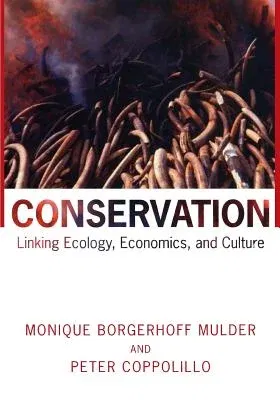Monique Borgerhoff Mulder
(Author)Conservation: Linking Ecology, Economics, and CulturePaperback, 19 December 2004

Qty
1
Turbo
Ships in 2 - 3 days
In Stock
Free Delivery
Cash on Delivery
15 Days
Free Returns
Secure Checkout

Print Length
347 pages
Language
English
Publisher
Princeton University Press
Date Published
19 Dec 2004
ISBN-10
0691049807
ISBN-13
9780691049809
Description
Product Details
Book Format:
Paperback
Country of Origin:
US
Date Published:
19 December 2004
Dimensions:
17.78 x
25.15 x
2.29 cm
Genre:
Ecology
ISBN-10:
0691049807
ISBN-13:
9780691049809
Language:
English
Location:
Princeton
Pages:
347
Publisher:
Weight:
635.03 gm